New Mexico has significant climatic variability, both temporally and spatially. In The Lincoln National Forest, temperatures widely vary with elevation. There can be a 30-degree temperature difference between the Chihuahuan Desert and the sub-alpine zones in the Sacramento Mountains! Mornings in Ruidoso usually start around 65 degrees and climb to the mid-80s at the height of the day. A recent heatwave was an anomaly for this elevation, sending temperatures to the 90s. Thankfully, it’s a dry heat. But that lack of moisture is bad news for any reprieve from the daily “VERY HIGH” fire danger posted outside the Smokey Bear Ranger District office. During that heatwave, I experienced my first wildfire–the ~15-acre Chance Fire–which was started by welding. While storms bring rain, they also bring lightning, a significant natural cause of wildfires.
The arid climate of the Southwest also poses problems for seed collection. Plant populations are dependent on rainfall, which has been scarce since the start of June. My fellow CLM intern (Evie Sanchez!) and I have been having trouble locating suitable populations to collect from because of the relative drought. The monsoon season typically starts in mid-June or July, when moist air from the Pacific gets sucked into an area of low pressure in the Southwest. This moisture manifests as afternoon thunderstorms that roll in like clockwork. While delayed this year, the monsoon season is not far away! While waiting for the monsoons, we have been familiarizing ourselves with the Smokey Bear Ranger District. The Lincoln National Forest is divided into three ranger districts: The northernmost Smokey Bear RD, separated from the southern Sacramento and Guadalupe Ranger Districts by the Mescalero Apache Reservation. There are still plenty of cool plants to see in the meantime, including several parasitic plants, which have evolved a unique strategy in a place where the UV index is “extreme” nearly every day!
Photosynthesis Freeloaders
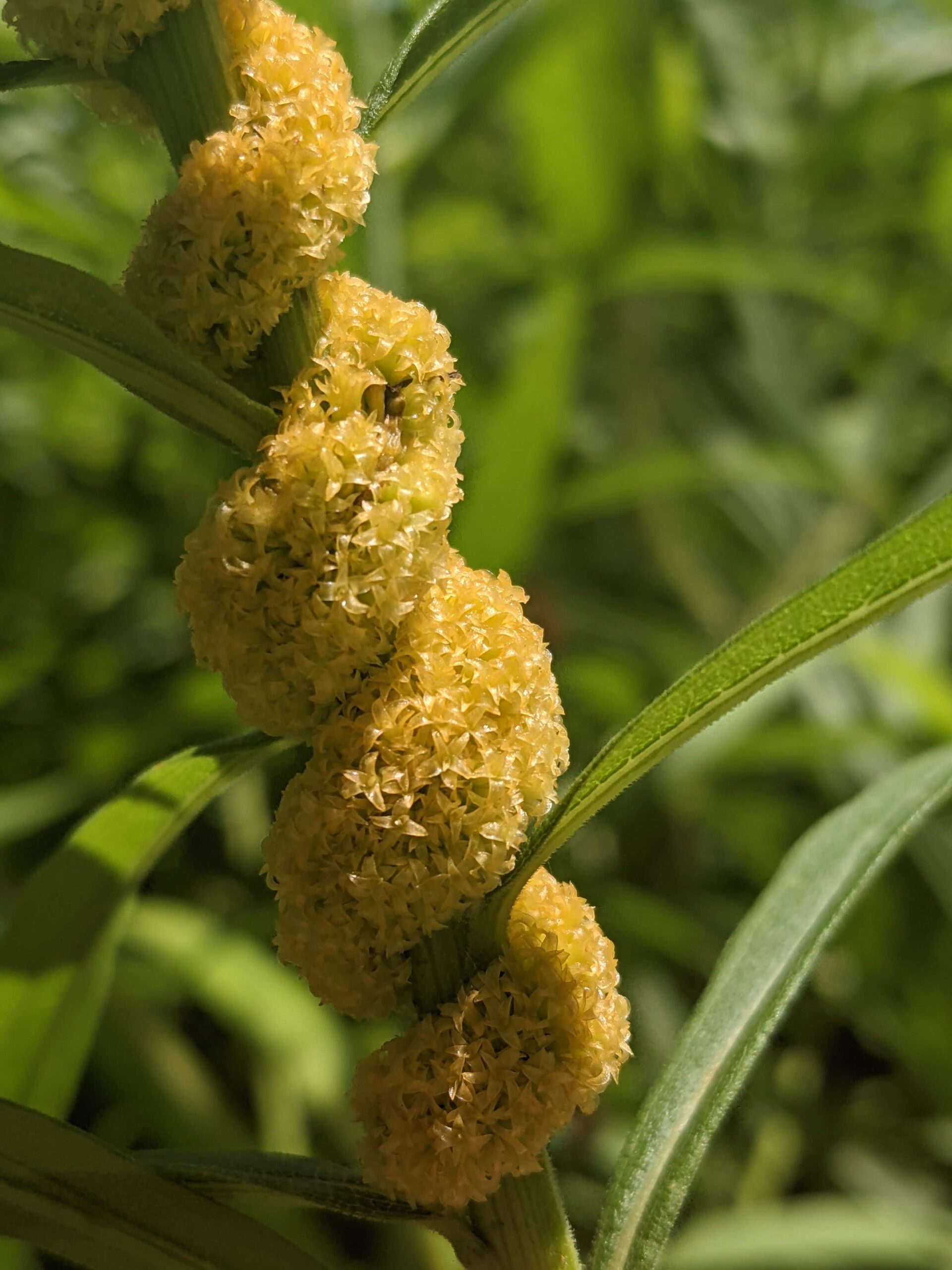
Parasitic plants have always captured my curiosity as oddities that have evolved to rely on the photosynthesis of other plants (or parasitism of fungi!), whether completely or partially, as their source of carbon/energy. I’ve noticed multiple taxa representing several plant families in my time here. Parasitic plants can be categorized based on their level of dependence on their host species, ranging from hemiparasites, which have a partial dependence and can still produce chlorophyll, to holoparasites, which gain all of their carbon from their host. They can also be categorized based on the part of the plant they parasitize and whether they can complete their life cycle with/without the host. The photo above is species of dodder (Convolvulaceae) I saw last summer in Ohio that is an example of a stem holoparasite. Note the absence of chlorophyll and vining habit around its host species–a goldenrod (Solidago sp.)
Orchidaceae
When people think of orchids, they usually think of the Phalaenopsis or Cattleya orchids sold in big-box stores. Vanilla orchids and lady-slippers (e.g., Cypripedium) are other well-known taxa. Nearly all orchids are at least partially mycoheterotrophic, meaning they rely on host fungi for part of their life cycle–usually for germination and development. Rather than parasitizing plants for their carbon and nutrients, they parasitize fungi! Mycoheterotrophs are typically found in forest understories where light is a limiting factor. Species that are partially mycoheterotrophic but can still photosynthesize are considered “mixotrophs.”
Most orchid species in the genus Corallorhiza, however, are fully mycoheterotrophic. As a result, they have lost the ability to photosynthesize. I had the opportunity to see two Corallorhiza species growing in the duff and litter of mixed conifer habitat: Corallorhiza maculata and Corallorhiza striata. C. maculata gets its name from the spots dotting its labellum. C. striata has a similar naming scheme, where it is named for the stripes on the inflorescences. In a habitat type where the understory is bare due to the dense canopy blocking the majority of light, these two species have found a way to make it work!
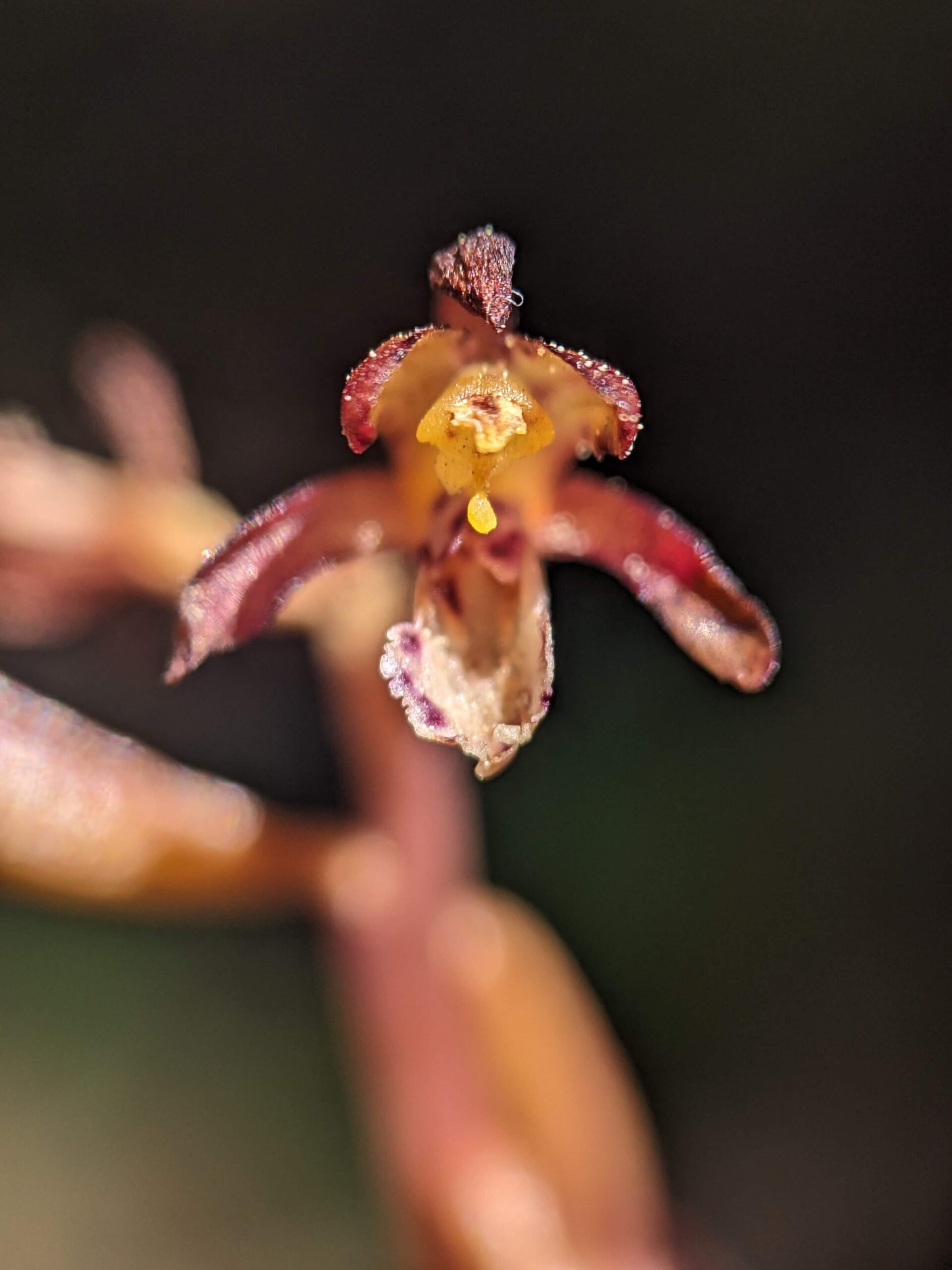
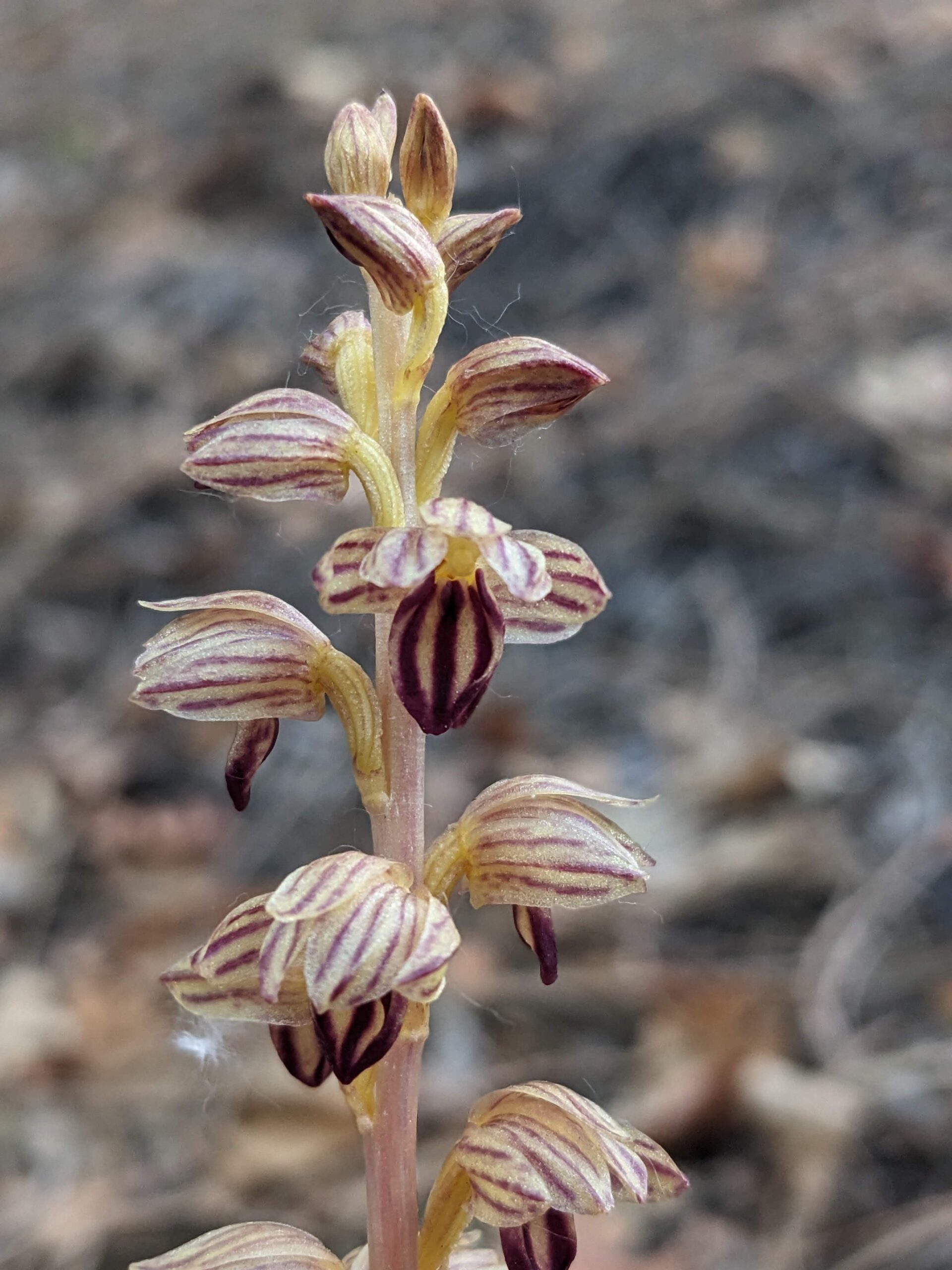
Orobanchaceae
Orobanchaceae, or the “Broomrape” family, is a group of annual to perennial herbs that are holoparasitic to hemiparasitic on the roots of other plant species using single or multiple haustoria. Haustoria are root-like structures used by parasitic plants to embed into the phloem and/or xylem of host plants, acting as both an anchor and a means to “tap” into the vascular system of the hosts. Water, sugars, and minerals can be stolen through this conduit. The Orobanchaceae family is of great research interest to evolutionary biologists studying the emergence of parasitism in plants because members of this family range from partial to complete parasites, capturing the transition from photosynthetic independence to holoparasitism.
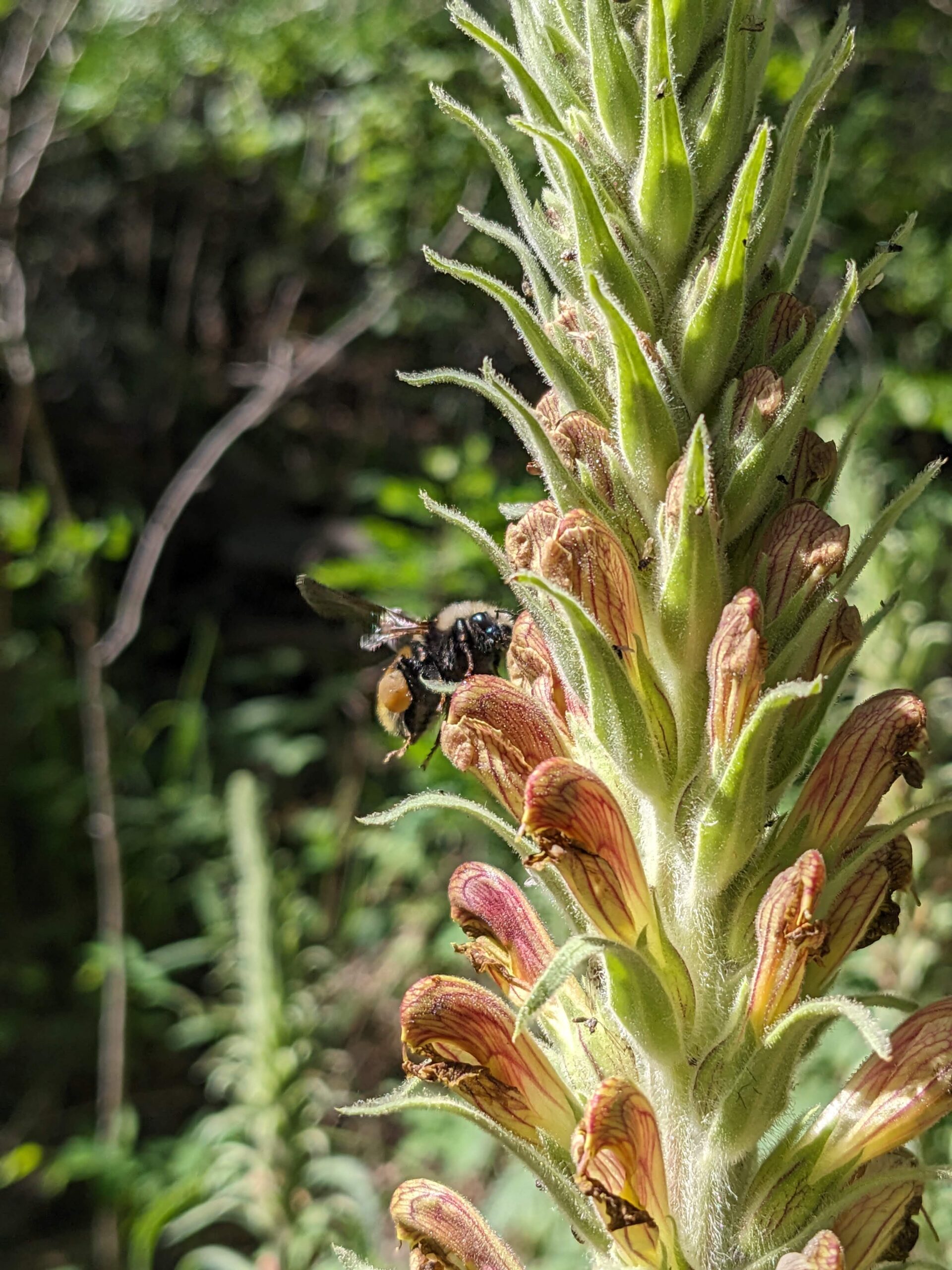
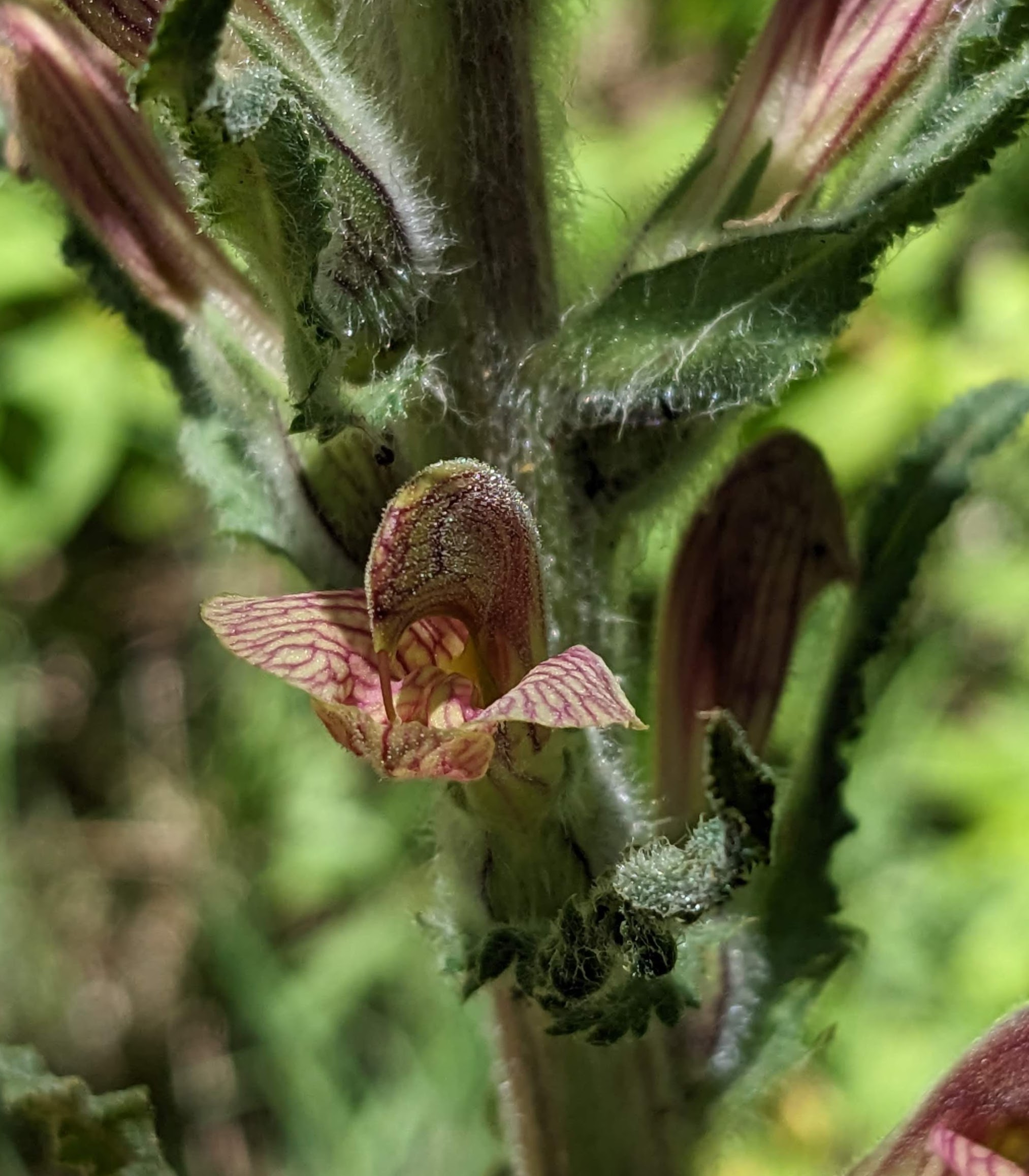
Pedicularis procera, or the giant lousewort, is a member of Orobanchaceae that grows to about four feet tall. Evie and I found a small population while scouting along a canyon in a mixed conifer forest at ~8000 ft. Many bee species were visiting the flowers, and I captured one in the act, legs laden with pollen! Its flowers are heavily modified for pollination by bees. Pedicularis is an example of a hemiparasitic genus that has multiple root haustoria.
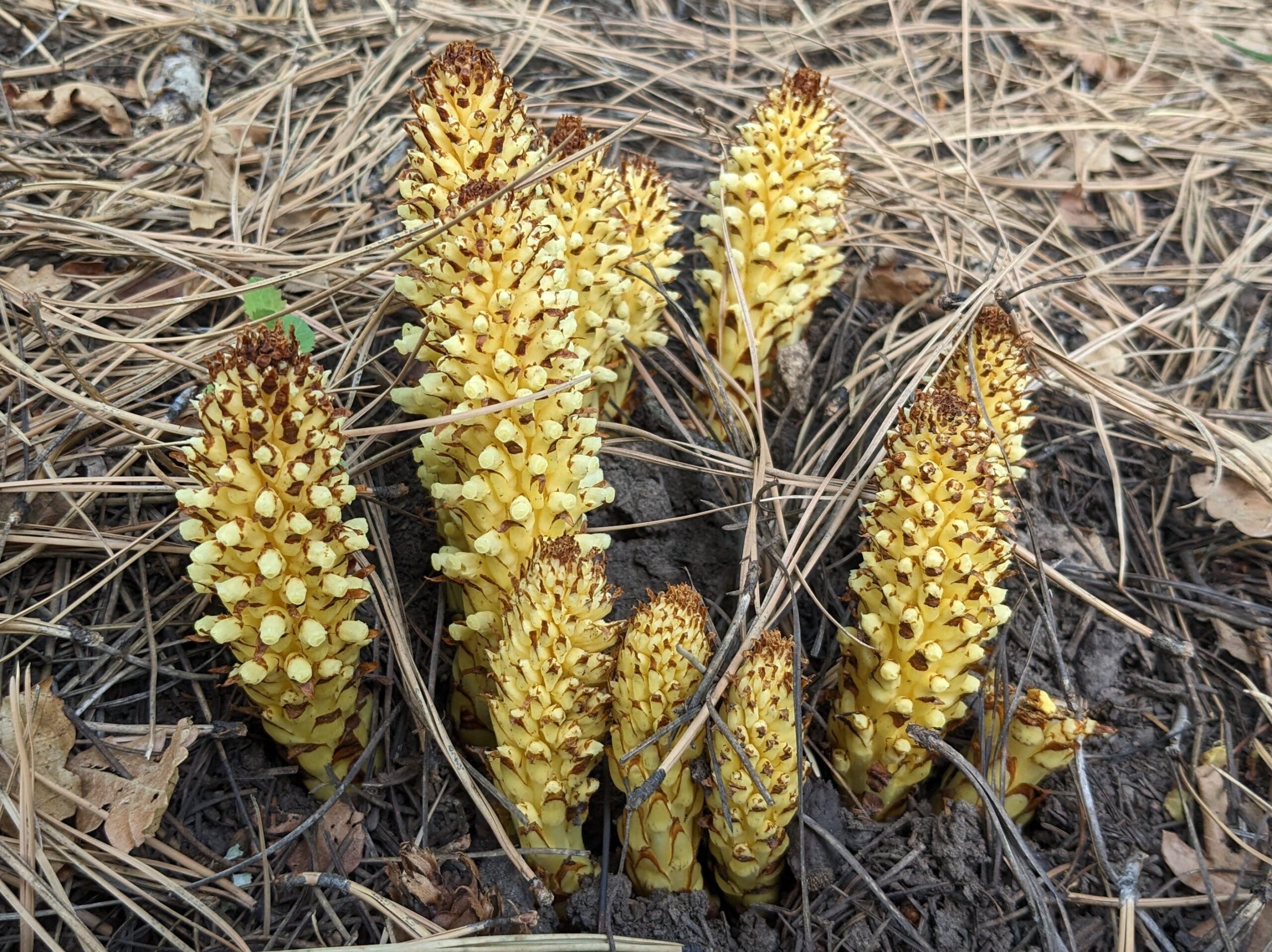
Conopholis is a genus I’m familiar with from the deciduous forests of the Midwest through Conopholis americana. Its common name is American cancer-root, or bearcorn. This species is host specific to oaks (Quercus sp.) and beeches (Fagus sp.). The western species, Conopholis alpina, likewise utilizes oaks as a host species (in addition to Acer and Juniperus) but grows at elevations from 4,200 to 12,000 feet–hence the species epithet “alpina.” Conopholis is a holoparasitic genus possessing a single, large haustoria.
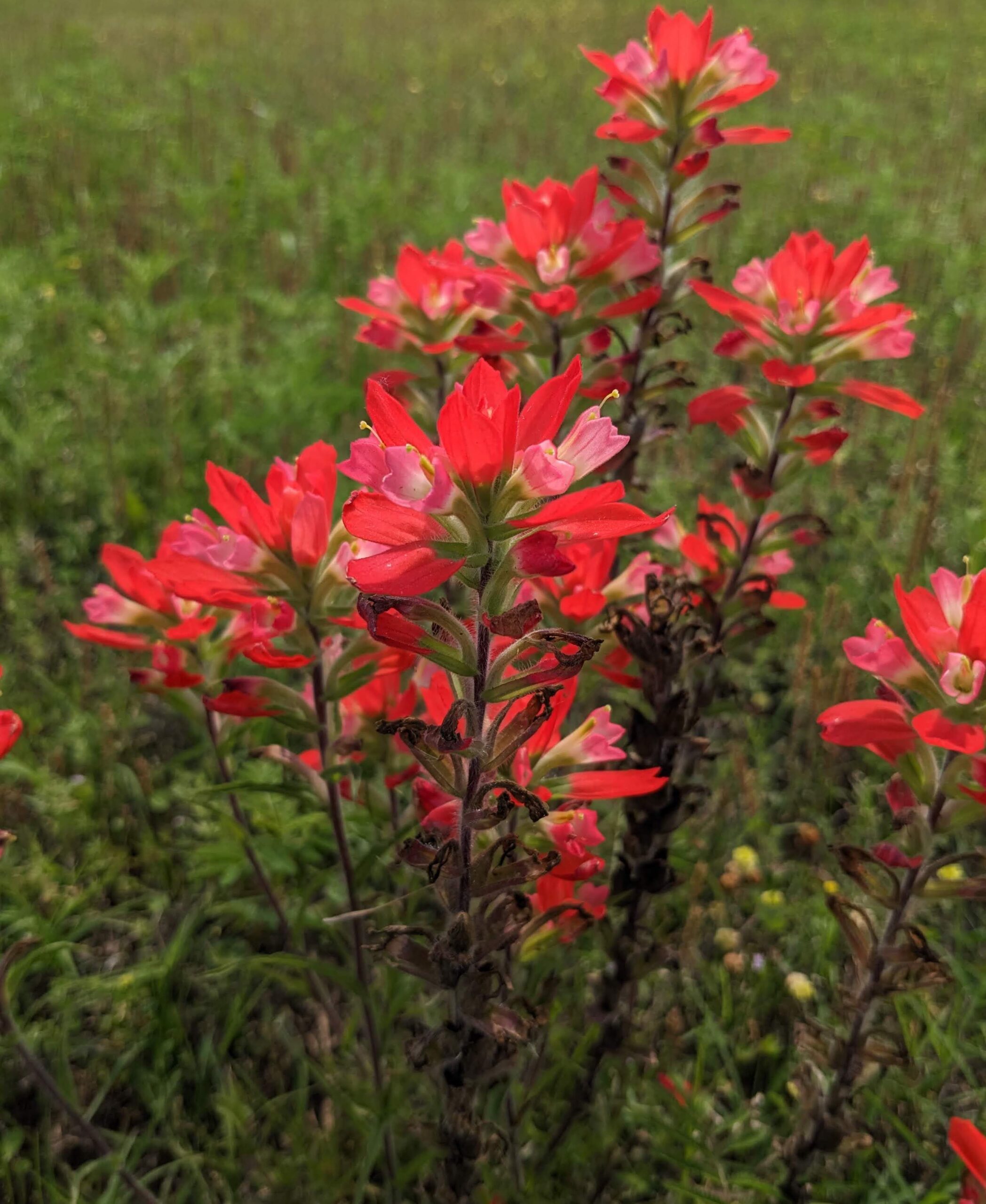

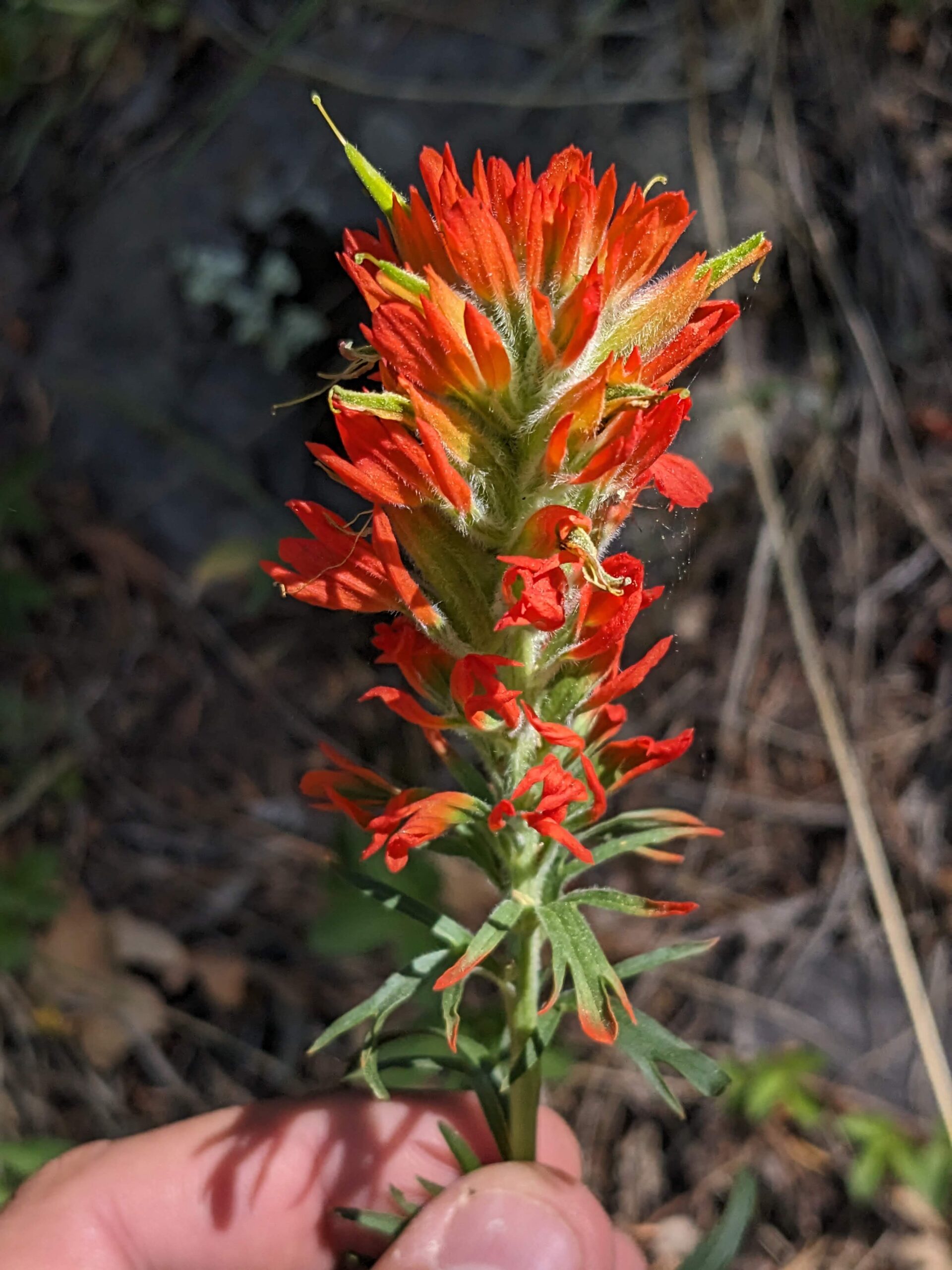
Last but not least are the scarlet paintbrushes! These beauties are hemiparasites on the roots of nearby plants. Castilleja diversity is concentrated in the American West, with only a handful of species from the eastern United States, Eurasia, and Central and South America. The most conspicuous part of the inflorescence is the bracts–not the flower proper. Flowers range in color from shades of red, orange, and purple but can also be white or yellow. Castilleja indivisa is not native to New Mexico, but I did see it on my road trip through Texas! This species is endemic to Texas, Louisiana, and Oklahoma.
Further Reading/Sources:
Flora Neomexicana Series: https://floraneomexicana.org/flora-neomexicana-series/
The Fungi (Watkinson, Boddy, & Money, 2016), Chapter 7: Mutualistic Symbiosis Between Fungi and Autotrophs
